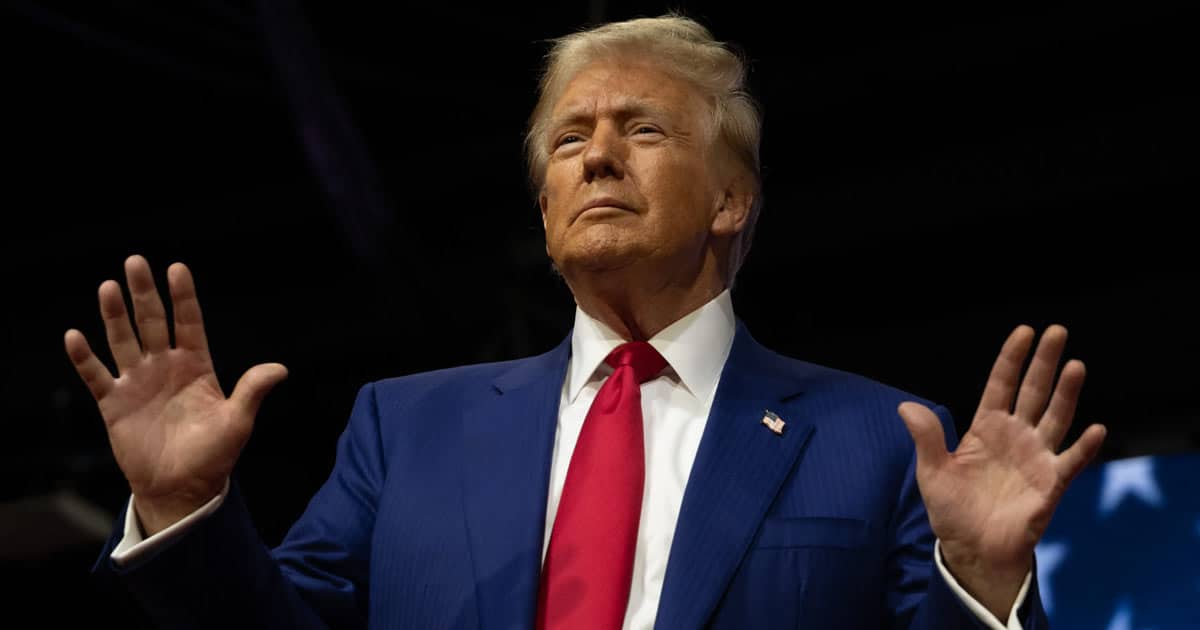The U.S. economy experienced a sharp recovery in the second quarter of 2025, with GDP growing 3 percent under President Donald Trump’s economic policies.
The economy bounced back from a 0.5 percent contraction in the first three months of the year.
While economists had projected only a 2.4 percent increase, the stronger-than-expected performance provides a boost for Trump’s economic agenda, especially as he continues to steer the country through global trade challenges.
The primary drivers of the GDP rebound were a significant drop in imports and a modest increase in consumer spending.
Imports saw a massive 30.3 percent decline, following a sharp 38 percent rise in the first quarter as businesses stocked up on foreign goods to avoid the impacts of higher tariffs.
Exports, however, fell by 1.8 percent after a small rise of 0.4 percent in the first quarter.
The figures were revealed on Wednesday in a report from the Bureau of Economic Analysis.
“The decrease in imports was led by nondurable consumer goods, mainly medicinal, dental, and pharmaceutical items,” noted Jeffrey Roach, chief economist at LPL Financial.
This indicates that the effects of President Trump’s tariff policies are beginning to manifest in the trade balance, with the U.S. reducing its reliance on imports.
Consumer spending grew by 1.4 percent, a notable increase compared to the 0.5 percent rise in Q1.
Despite inflation concerns, shoppers are opening their wallets, possibly due to growing confidence in the economy under Trump’s leadership and trade policies.
However, some areas of the economy are showing signs of weakness.
Housing faced challenges as cautious consumers and higher mortgage rates led to a decline in home sales and residential construction.
Gross private domestic investment (GPDI) also fell nearly 16 percent after a 24 percent increase in the first quarter.
This drop indicates a slowdown in private-sector investment, particularly in industries like home construction and machinery.
However, housing is expected to pick up as consumer confidence returns.
Despite this, the private-sector capital expenditures (capex) continued to rise, with businesses increasing their spending on equipment and infrastructure.
The increase in capital spending reflects optimism among businesses about future growth and productivity under Trump’s economic policies.
On the inflation front, the GDP price index, a key measure of domestic price increases, climbed by a modest 2 percent, down from 3.8 percent in the first quarter.
The personal consumption expenditures (PCE) price index, which tracks household spending, also rose by 2.1 percent, a significant improvement from the 3.7 percent rise in Q1.
Despite these improvements, the Federal Reserve remains under pressure to address ongoing inflationary concerns.
The central bank is expected to leave interest rates unchanged for the fifth consecutive meeting as it continues to monitor trade dynamics and overall economic health.
However, economists predict the Fed may be poised to cut rates in September.
“The Fed will likely be in a good place to cut rates by their September meeting,” said Jeffrey Roach, chief economist at LPL Financial.
Looking ahead, economists expect the economy to continue growing, though challenges remain.
The New York Fed Staff Nowcast projects the U.S. economy to expand by 2.4 percent in the third quarter.
Early data points to improved consumer and business sentiment, although tariff-related fluctuations may still affect GDP in the short term.
With President Trump’s tariffs set to take effect in early August, the administration is negotiating new trade agreements with key allies such as the European Union, the United Kingdom, and Japan.
Trump has expressed confidence that these agreements will further bolster the U.S. economy, asserting that a global baseline tariff rate of 15 to 20 percent will help level the playing field for American businesses.
Recent consumer sentiment surveys indicate that Americans are feeling more confident about the future.
The Conference Board’s Consumer Confidence Index showed improvement in July as pessimism about future business conditions receded.
This week, key economic reports will provide more clarity on the state of the U.S. economy.
The Federal Reserve’s preferred inflation measure, the PCE price index, is expected to show a rise in June inflation to 2.5 percent from 2.3 percent, while core PCE inflation is forecast to hold steady at 2.7 percent.
The Bureau of Economic Analysis will also release personal income and spending data, with economists predicting modest gains.
The July jobs report, due later this week, will also provide insight into the strength of the labor market, with expectations for 110,000 new jobs and a slight increase in the unemployment rate to 4.2 percent.
While the U.S. economy is showing signs of strength under President Trump’s leadership, the administration continues to focus on strengthening trade relationships and reducing inflationary pressures.
The next few months will be crucial in determining whether this positive momentum can continue into the second half of 2025.
READ MORE – Gavin Newsom Admits California’s Economy Depends on Cheap Illegal Alien Labor

Our comment section is restricted to members of the Slay News community only.
To join, create a free account HERE.
If you are already a member, log in HERE.